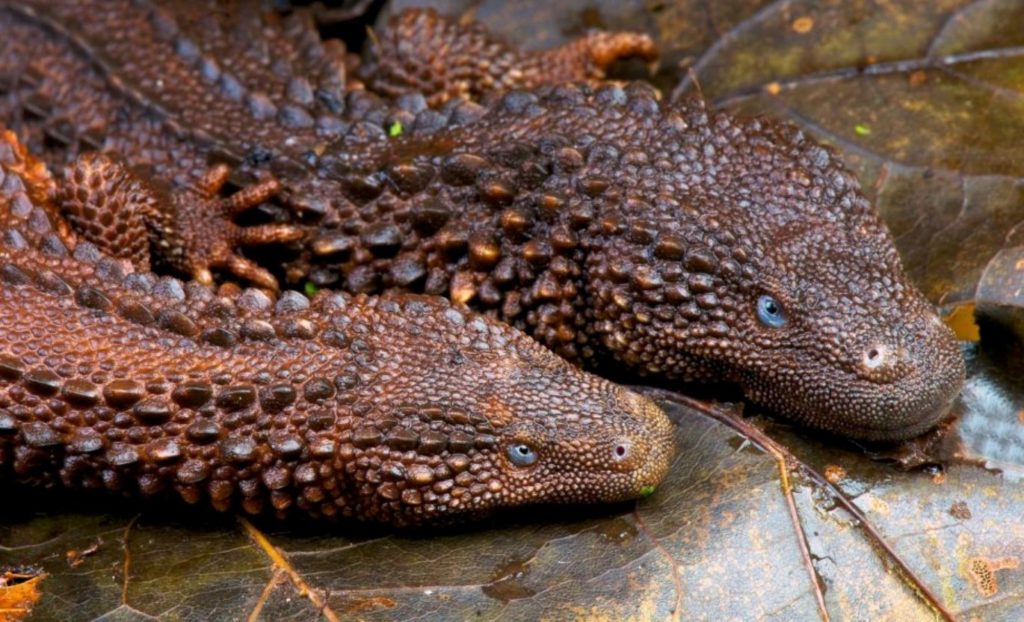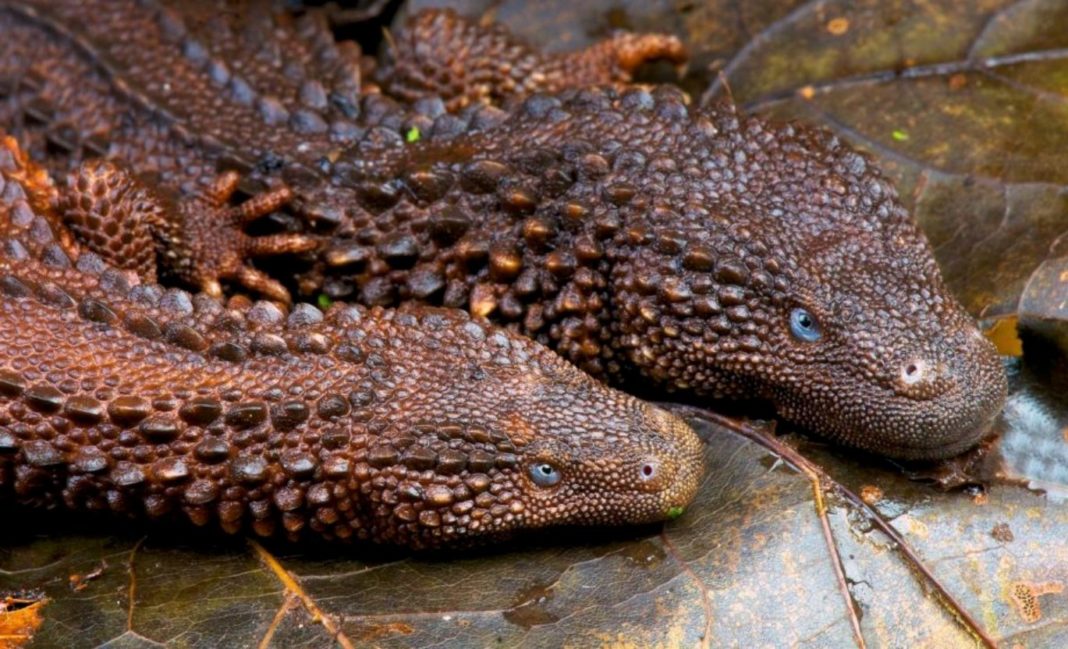It is the only living species in the family Lanthanotidae and it is related to the true monitor lizards.
The earless monitor lizard was described in 1878 by Franz Steindachner.[6] The genus name Lanthanotus means “hidden ear” and the species name borneensis refers to its home island of Borneo. The earless monitor lizard is endemic to the Southeast Asian island of Borneo. Here it is known from Sarawak in East Malaysia, as well as West and North Kalimantan in Indonesia.
It is found in lowlands at altitudes below 300 m (1,000 ft) near streams and marshes. These are typically in rainforests, but it is also found in streams flowing through degraded habitats such as agricultural land, mature fruit tree gardens and palm oil plantations, and reportedly may occur in rice paddies. Its habitat is tropical with air and water temperatures that generally are about 22–29 °C, and captives reportedly prefer 24–28 °C.
 Adult earless monitor lizards typically have a total length of about 40 cm. When hatching the total length of the young is about 7–14 cm. When one year old, their total length is about 23–25 cm.
Adult earless monitor lizards typically have a total length of about 40 cm. When hatching the total length of the young is about 7–14 cm. When one year old, their total length is about 23–25 cm.
They typically feed on earthworms, crustaceans and fish. In captivity, they will eat fish (both whole and pieces), earthworms, squid, shrimp, tadpoles, yolk from green sea turtle eggs, pieces of pig and chicken liver, baby mice and mussels, but refuse to take bird eggs and legs of frog.
The earless monitor lizard has not been rated by the IUCN, but it likely qualifies for vulnerable (if its range covers less than 2,000 km2) or endangered (if its range covers less than 500 km2).
According to Wikipedia.














